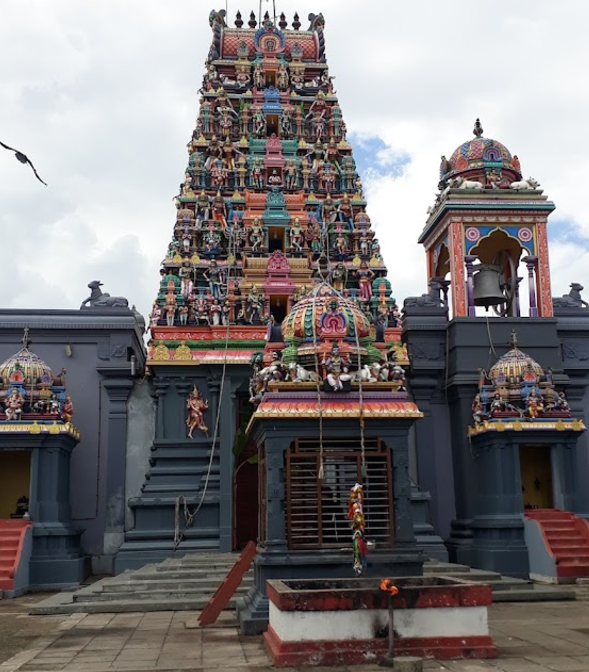Origin/History :-
The exact origins of Ketheeswaram Temple remain uncertain. Historian Paul Peiris suggests that Thirukketheeswaram was one of the five recognized Ishwarams of Lord Shiva in Sri Lanka, predating the arrival of Prince Vijaya in 600 BCE. The temple has a documented history spanning over 2,400 years, supported by literary references from the postclassical era (600 BCE–1500 CE).
The temple is located near the ancient Tamil port of Manthottam (Mathoddam), a prominent hub of international trade in ancient times. Archaeological findings from the area, including the remains of the Palavi tank and a Hindu city built of brick, confirm the region’s historical significance. Renowned ancient civilizations like the Greeks, Romans, Phoenicians, Arabs, and Chinese traded here, highlighting its role as a vibrant trading center.
Sangam literature (600 BCE–300 CE) mentions Mathoddam as one of the greatest ports linking Tamilakkam and Sri Lanka. By 1887, Hugh Nevill described the site as the location of a revered shrine to a Supreme God, initially symbolized by a single stone and later restored by Shaivite devotees. These layers of history underscore the antiquity and cultural importance of Ketheeswaram Temple.
Chronology :-
Ketheeswaram Temple was initially built by the Naga people, with contributions from the Karaiyar community of Manthai, who linked the temple to their Sangam heritage. It is praised in 6th–8th century Saiva texts like Tevaram and is one of the Paadal Petra Sthalams, along with Koneswaram. Maintained by the Pallavas, Pandyas, and Cholas, inscriptions reference its religious and cultural significance.
The Portuguese destroyed the temple in the 16th century, using its stones for colonial structures. Rediscovered in 1894, it was reconstructed in the 20th century, with major restorations in 1949, 1952, and 1976. However, its premises were occupied by the Sri Lankan Army during the civil war in 1990, disrupting further restoration efforts. Efforts to fully reclaim and protect the site as a sacred area continue.
Puranic Significance :-
Mythical stories linked to the Ramayana suggest that Mandodari, wife of King Ravana, hailed from Manthai. Her father, Mayan, the king of Manthai, is believed to have built the ancient Thiruketheeswaram Temple to worship Lord Shiva.
According to Hindu legends, Maharishi Bhrigu and the planetary deity Ketu worshipped Shiva at this shrine, with the latter inspiring the temple’s name, Ketheeswaram. Another tale from the Skanda Purana, specifically the Dhakshana Kailasa Manmiam, narrates the story of how the Wind God, Vayu, uprooted a tower from Mount Maha Meru during a cosmic battle and deposited it at Thiruketheeswaram. This act established the temple as a sacred site.
The Skanda Purana also highlights Thiruketheeswaram and Koneswaram as two of the nine most sacred Hindu shrines, with the remaining seven located in India. These legends underscore the temple’s spiritual and mythological importance.
